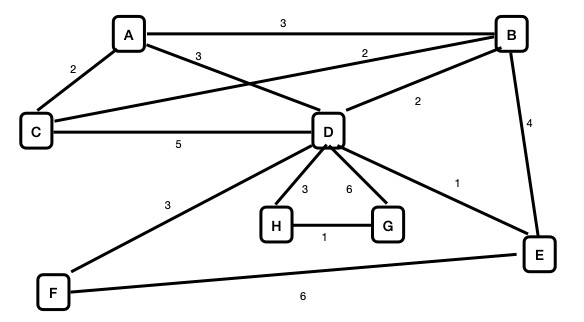Consider the following undirected graph:

-
Find the shortest paths from vertex C to all other vertices.
-
Find the minimum cost spanning tree, showing the main steps in applying the algorithm.
Repeat the previous problem for the following graph.

Given an undirected graph, a minimum cost spanning trees need not be unique. Given an example of a graph with two different minimum cost spanning trees, where the graph has the fewest number of vertices and the fewest number of edges. In addition to displaying the graph and the two different minimum cost spanning trees, provide an explanation as to why this graph is the smallest possible with two different such trees.
